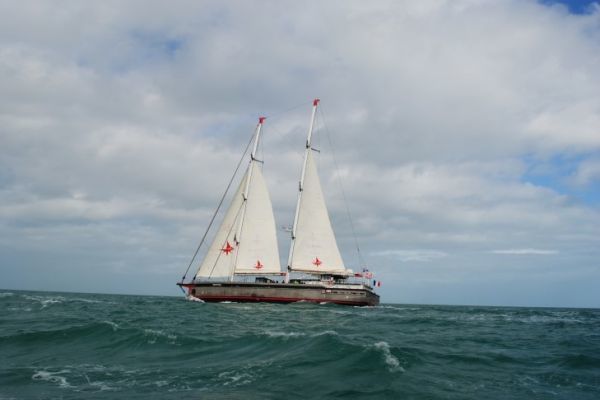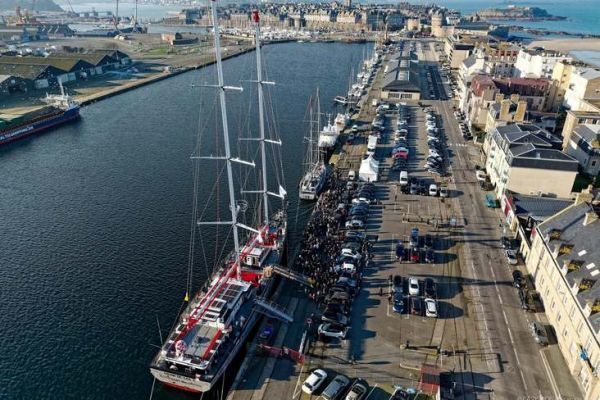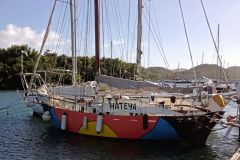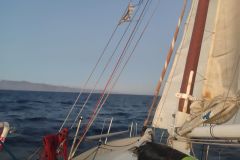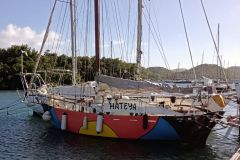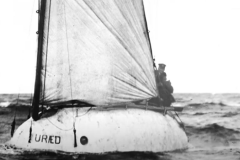The departure for the other side of the Atlantic has begun. Grain de Sail II, the second cargo sailboat named after the Breton chocolate company Grain de Sail, left its mooring in the corsair town of Saint-Malo at 12 noon on Friday, March 15, 2024, bound for New York. On board are 180 pallets, representing some 350 tonnes of merchandise. Estimated arrival: April 1. We followed her during loading and departure.
"Transport less, transport better"
Olivier Barreau and his twin brother, founders of Grain de Sail, grew up in the region, by the ocean. An avid windsurfer, Olivier developed a fascination for the wind at an early age. It's a heritage that clearly runs in the family, as he tells us that some of his family members were once schooner owners for the Icelandic cod fishery! With a family heritage based on respect for nature, and parents who produce organic cider, the idea of reinventing the transport of raw materials has long been in Olivier's mind. But for this project to become a reality, it needed more than willpower: it needed an ecologically responsible and financially viable approach. In the eyes of this seasoned energy activist, ecology is an imperative. After starting out as a salesman with Elf Antargaz, he branched out into solar panels and then wind turbines, acquiring a stake in Nass & Wind in Lorient. The funds raised from its resale enabled him to create Grain de Sail. In 2012, he embarked on this entrepreneurial adventure, soon joined by his brother Jacques. In 2013, the Barreau family opened their first roasting workshop in Morlaix, followed by a chocolate factory in 2016. After building their first prototype cargo sailboat in 2020 to transport raw materials from one side of the Atlantic to the other, the Grain de Sail company expanded. Today, this second cargo sailboat has joined it on the water, loaded with 350 tonnes of freight, for its first transatlantic voyage.
Initially intended to bring back only cocoa and coffee from Latin America, Grain de Sail II decided to include a stopover in New York, in order to limit empty trips. For her outward journey, she sails with 4 holds, spread over 2 levels, filled with goods (cosmetics, wines, spirits, industrial equipment, medicines, perfumes, textiles, dry food, musical instruments, etc.) entrusted to her by French companies also committed to decarbonization. To meet pharmaceutical and other standards, Grain de Sail II maintains temperature (15° to 25°) and humidity levels in the holds. A crew member will make a round of the hold every 6 hours to check that everything is in order.

Nor will the cargo ship return empty, as it will return to Saint-Malo with its holds filled with cocoa beans loaded in the West Indies for the Morlaix chocolate factory. Racks have also been installed on the forward part of the deck to accommodate rum barrels. These will be aged naturally, as they will be exposed to the elements while underway.
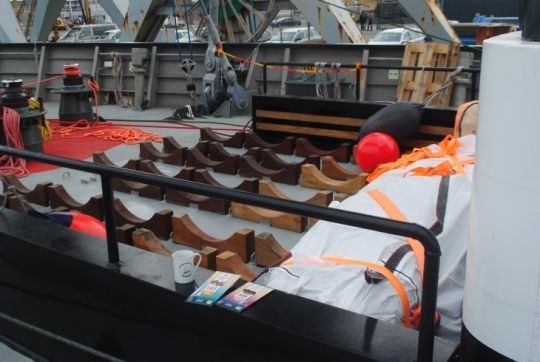
Carefully planned loading
Loading of the Grain de Sail II began 3 days before departure. On the quayside of the Bassin Vauban and on board the cargo yacht, dockers and crews worked hard all week to ensure safe sailing. A repetitive but meticulous process: each pallet lowered into the hold by crane had to be secured with straps and airbags to prevent any damage during shipment. Olivier Barreau insists: '' We all have to keep in mind that we're dealing with a real sailboat that's going to list! This consideration guarantees everyone's safety ''.
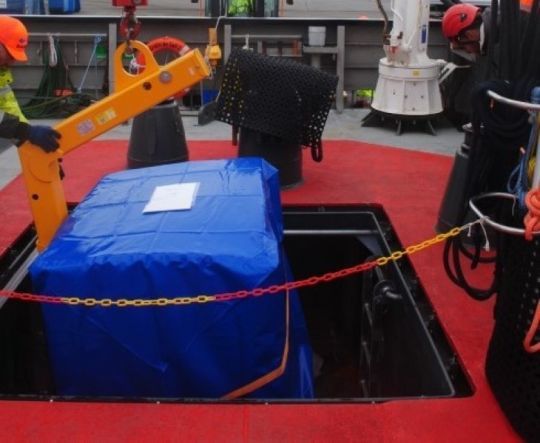
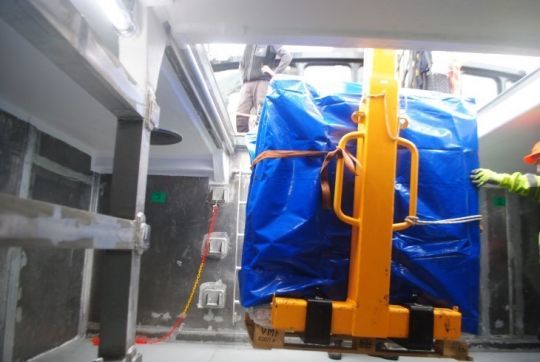
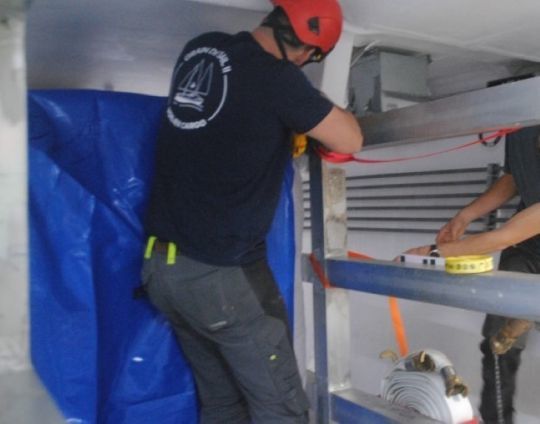
The importance of load sharing
'' With a loading capacity of 240 pallets, it was time to make a move '', stresses Olivier, '' which is why the mass balance is regularly calculated ''. Determining how loads and weights will be distributed on the sailboat helps guarantee its stability, as well as the safety of the crew when sailing. For this purpose, the total weight of the yacht, including hull, rigging, sails, equipment, fuel, drinking water, cargo, etc., is taken into account. A longitudinal and lateral load distribution ensures adequate balance.
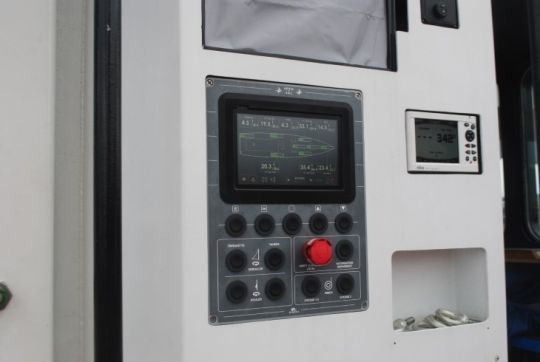
Departure for a first transatlantic voyage
Since early morning on Friday, March 15, 2024, the Grain de Sail teams have been on the alert. The last pallets have been loaded. Everything went according to plan. At midday, the captain sounded the departure bell; the flags were hoisted and the gangway raised.
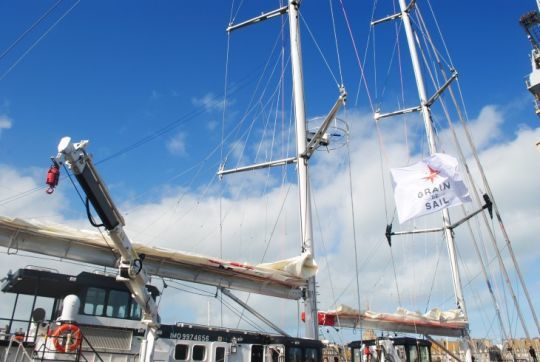
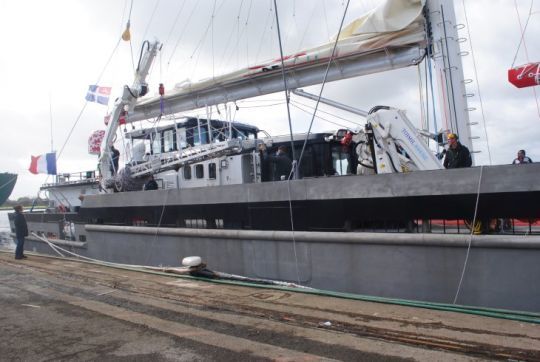
A last goodbye for the skippers...
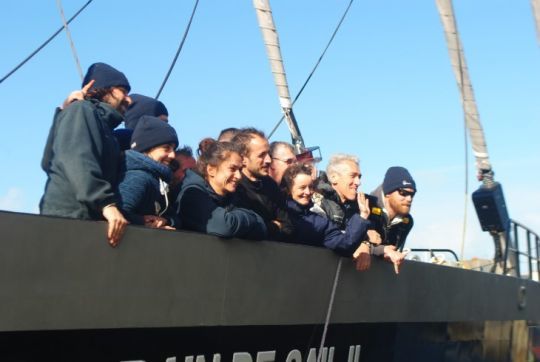
at 12:30 p.m., Grain de Sail II has just passed through the lock to the cheers of the people of Saint-Malo and a few tourists who have come to witness the event. As with all commercial vessels, a pilot boat will accompany her until she reaches a clear zone off the Bay of Saint-Malo, where she can sail safely under her own power.
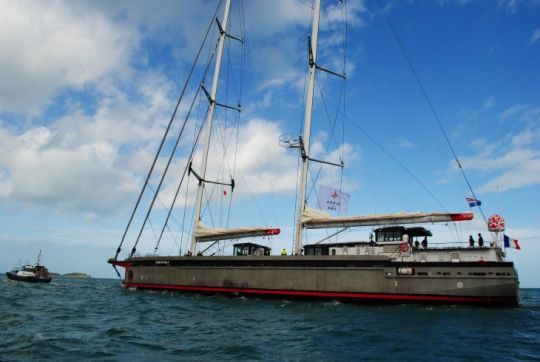
The Barreau brothers, founders of the company, are aboard RIBs to watch the long-awaited start. Once the pilot has disembarked, it's under Olivier's moving eyes that we follow the first hoisting of the Grain de Sail sails. It takes 10-15 minutes to hoist each one. Two Harken 11.30 hydraulic winches are installed at the foot of each of the two masts. A Harken 80.2 winch on each side is used for the headsails.
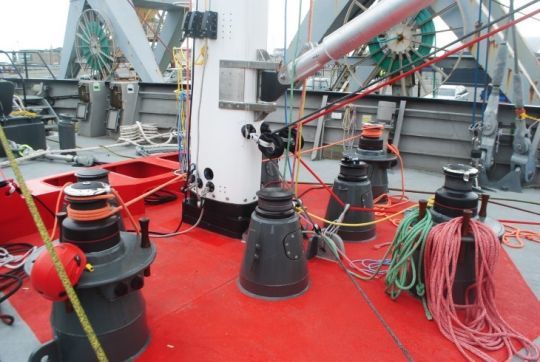
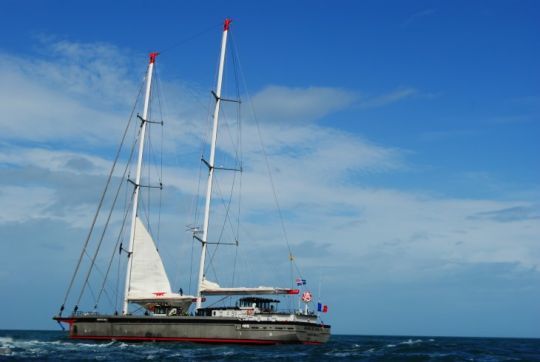
After the foresail, it's the staysail's turn. The Wichard group had already worked on furling sails: this is the first time that a hydraulic motor unit of this scale has been developed, according to Grain de Sail. One for the Yankee, the other for the staysail.

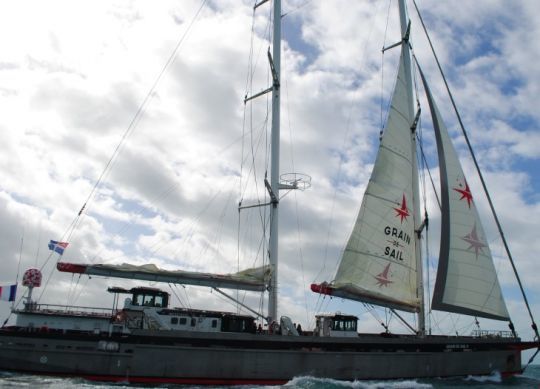

Then it's the mainsail's turn. On board the RIB, the Barreau brothers are in contact with the crew. The boat is making 15 knots.
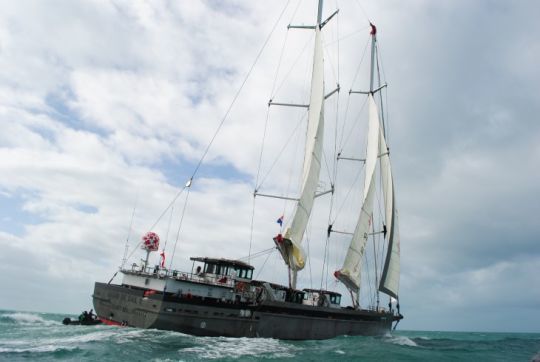
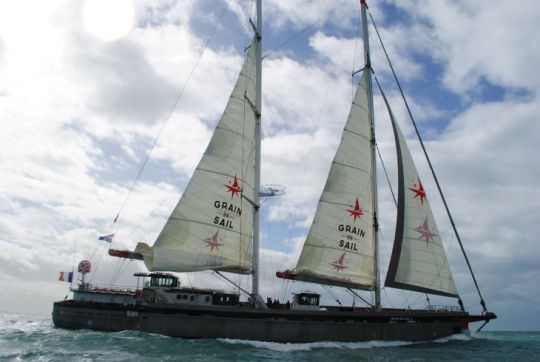
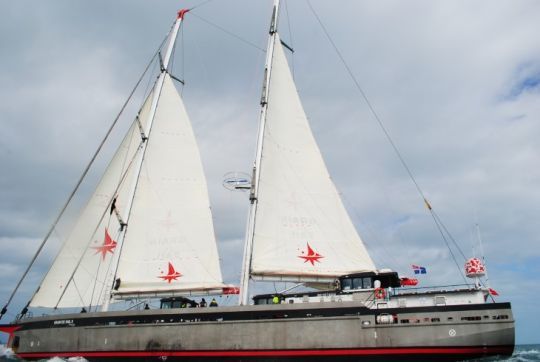
It's with this last shot that we let Grain de Sail II set sail, in favourable winds!
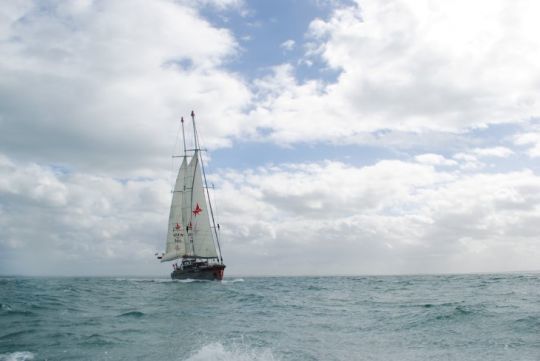

 /
/ 